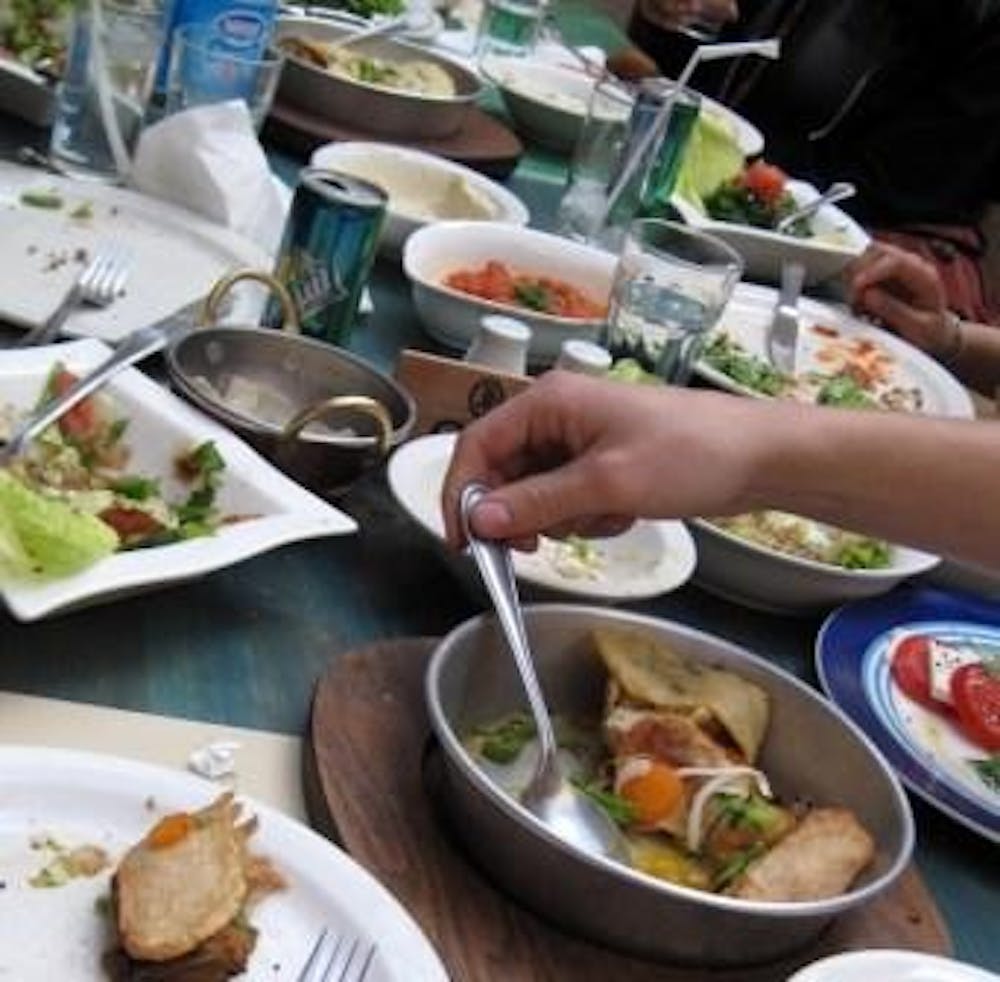Eating vegan — and not — in Jordan

Adjusting one’s eating habits can be a challenging aspect of studying abroad. For me, it was a question of whether my host family would be willing to accommodate my preference for a vegan diet, or whether I would have to yield to their norms.
Thus far, I’ve found it to be a balance of both: They’ve adjusted some, but not all, of their meals, while I’ve eaten a bit more meat than I would prefer.
Here’s a breakdown of a typical day of eating here:
Breakfast In the U.S.: A couple of pieces of whole-grain toast, with a huge bowl of Kashi cereal with soymilk.
In Jordan: Lots of pita bread (certainly not whole grain) that may be dipped in any variety of options, the most popular and prevalent of which (at least in my house) is hummus. Outside of that, there’s fool, which is kind of like a bean paste (it doesn’t sound great, but it’s actually quite tasty); a grape salsa/dish (once again, it sounds odd, but it has a somewhat sweet taste); eggplant; a dairy product similar to cream cheese; and a tomato sauce that would look perfectly normal on spaghetti. Of these, the only real staple is hummus; the rest, and others that I haven’t mentioned, come and go infrequently.
Advantage: U.S. I do enjoy the breakfasts here, as well, but it’s really just a health preference.
Lunch In the U.S.: A P.B.J and some fruit.
In Jordan: Usually rice, some kind of vegetable soup and pita at the school cafeteria. Also, sometimes just a fruit smoothie, some pita and a snack bar.
Advantage: Even. I like the (somewhat) healthy soups that are available here, and it’s quite easy to eat vegan for lunch. I do miss that peanut butter, though.
Dinner In the U.S.: Spinach salad and usually some sort of pasta or rice dish, either fresh or frozen depending on where I’m living.
In Jordan: Almost all meals my family prepares involve (once again) pita bread and/or rice. Other than that, though, it could be anything. Vegetables are often a major part of the meal, which is wonderful.
Sometimes it’s with some meat, and I usually eat it (though usually as little as I can). Still, it’s not that bad and the family seems to respect my preferences. The variety and quality of my dinners here has been outstanding. (When I spoke with my host parent’s kids — all four of whom now live in the U.S. — they all say they miss their family’s cooking.)
Advantage: Definitely Jordan. Maybe I was just fortunate to get placed with this particular family, but in any case, I’m very lucky. This will be quite an adjustment when I return to America.
Facts and Myths in Jordan Middle Eastern and Mediterranean food has more flavor than American food: FACT
I heard this a few times before I came, and I had high expectations. Needless to say, I haven’t been disappointed. The food itself has some similarities to U.S. food, but it just seems to have more flavor.
Of course, I have had to adjust a little bit. I’ve been sickened by the food a couple times already, because there are certain things in the food here that the locals are accustomed to, but foreigners are not. I was told I would definitely get sick at some point on this trip, and I have. But the illnesses have been very brief and manageable, and it sure hasn’t deterred me from eating and experimenting.
I’m convinced that trying the local food is one of the best parts of traveling abroad, especially in the Middle East.



